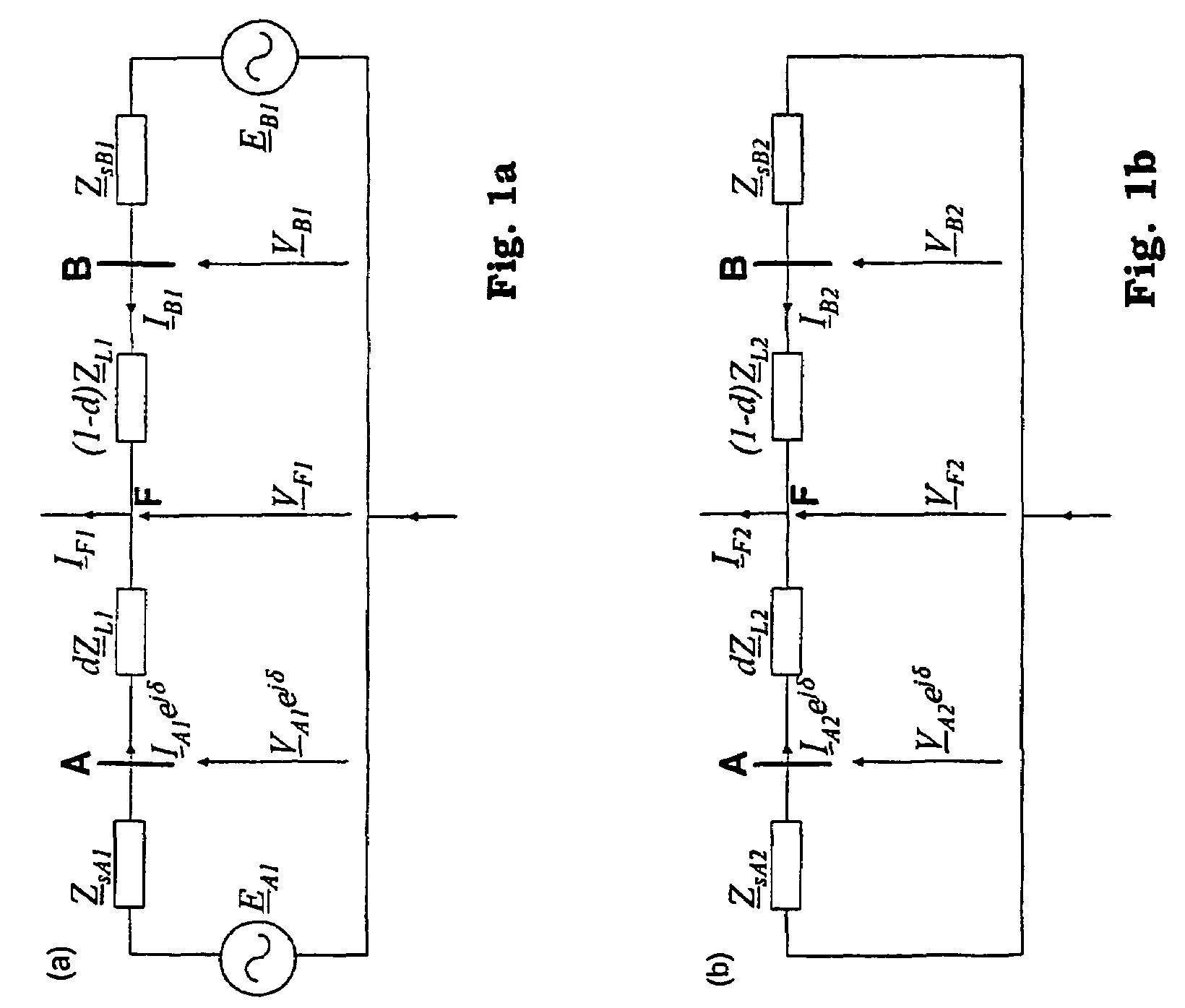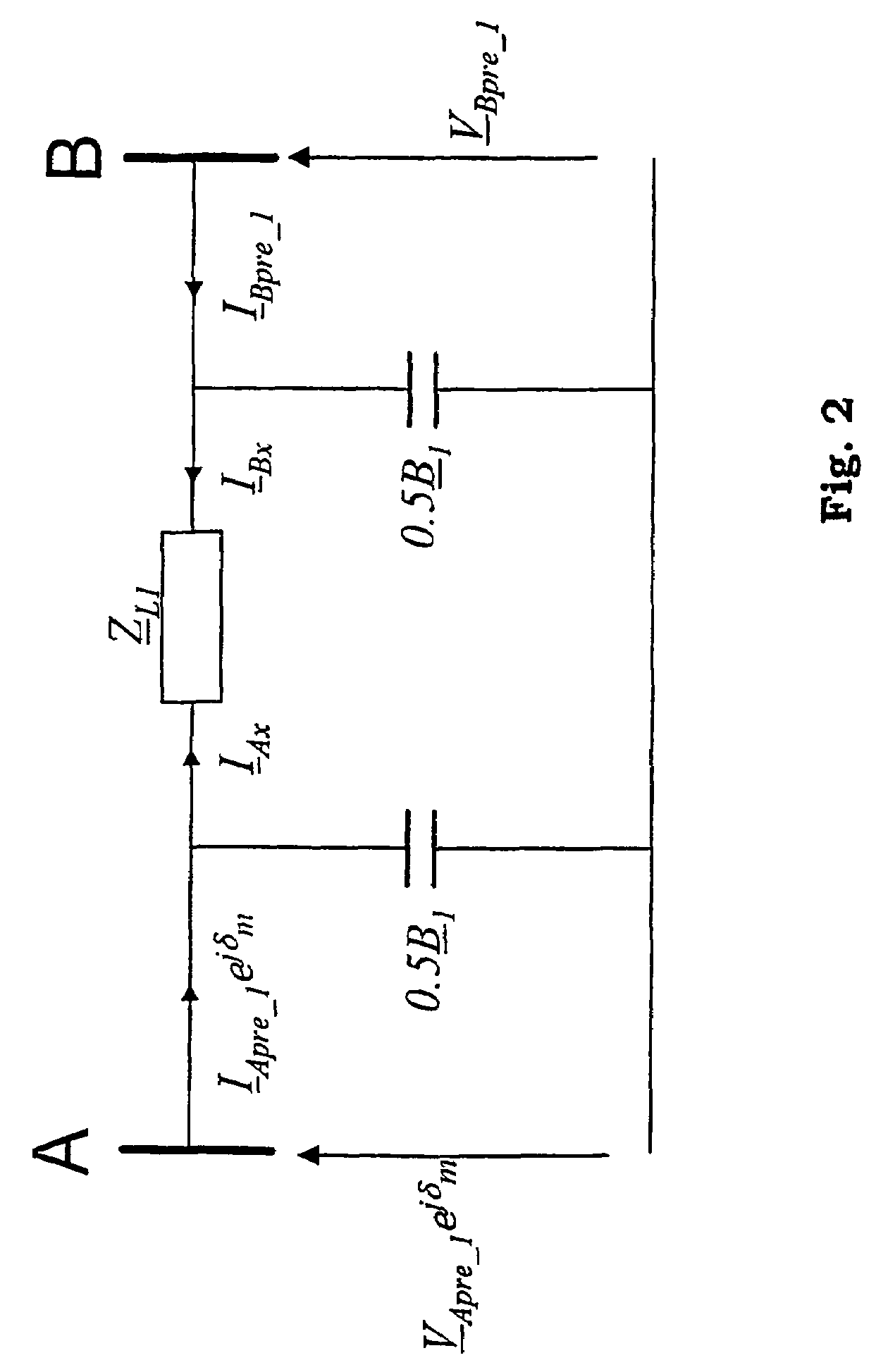Method and device of fault location
a fault location and fault technology, applied in the direction of fault location, fault location by conductor type, instruments, etc., to achieve the effect of improving the accuracy of fault location and high accuracy
- Summary
- Abstract
- Description
- Claims
- Application Information
AI Technical Summary
Benefits of technology
Problems solved by technology
Method used
Image
Examples
Embodiment Construction
Characteristic of the Unsynchronized Measurements at the Line Terminals
[0029]It is considered that the measurements at the line terminals are performed without any synchronization. Thus, a fault occurrence instant is the only time relation between the measurement data from the line terminals. Physically, the actual fault occurrence instant (say, t0) is the same for both ends data. However, in real life a fault can be detected by the fault detectors (contained in protective relays or fault locators at particular line ends) in certain instants (at the substation A: tA and at the substation B: tB), which do not correspond to the actual inception instant (t0). So, taking into account that in general:
tA≠t0
tB≠t0
tA≠tB
one can expect that at both the ends the measurements from slightly shifted intervals can be frozen and used as the input data for the fault location algorithm. In some heavy cases (far end faults with high fault resistance) fault detection can be delayed even by few sampli...
PUM
 Login to View More
Login to View More Abstract
Description
Claims
Application Information
 Login to View More
Login to View More - R&D
- Intellectual Property
- Life Sciences
- Materials
- Tech Scout
- Unparalleled Data Quality
- Higher Quality Content
- 60% Fewer Hallucinations
Browse by: Latest US Patents, China's latest patents, Technical Efficacy Thesaurus, Application Domain, Technology Topic, Popular Technical Reports.
© 2025 PatSnap. All rights reserved.Legal|Privacy policy|Modern Slavery Act Transparency Statement|Sitemap|About US| Contact US: help@patsnap.com



